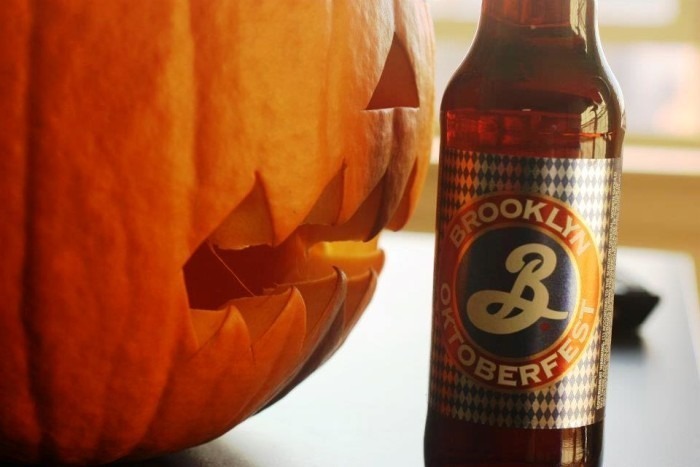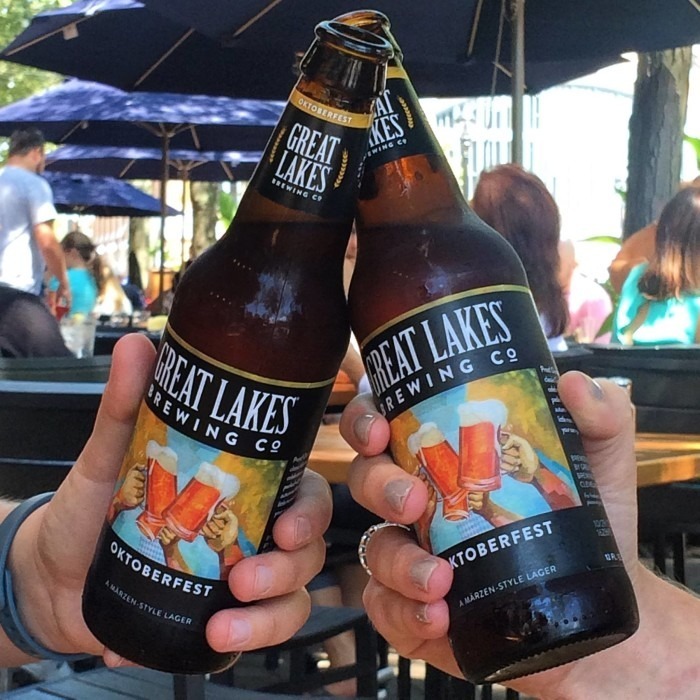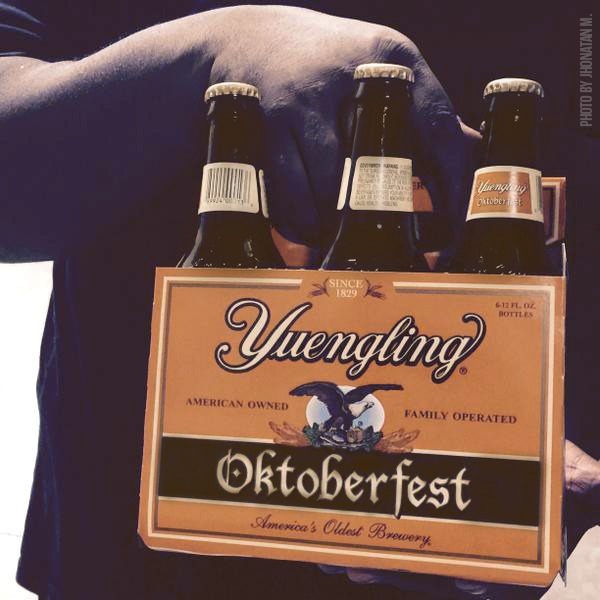Get To Know Marzen, The Obscure Beer Style That Gave Us Oktoberfest
Time was that brewers in Northern Europe, particularly in what became Germany, could not brew decent beer past March or so. Why? Because the warming weather would render most fermentation vessels welcoming hot tubs for airborne bacteria that had been just waiting for the colder temps to dissipate.
So brewers in the pre-refrigeration era would concoct their last beers of the winter in March and age them through the spring and summer. They would tap them in September or October, the months of aging invariably providing rounder, smoother brews.
Beers made on this timeline eventually came to be called Marzenbier or simply Marzen — as in the German for "March."
Marzen still makes regular appearances on European beer menus and tap runs. In the U.S., however, a seemingly irresistible term long ago supplanted it: Oktoberfest (a.k.a. Octoberfest). The first Octoberfest — the festival, not the beer — was in October 1810 to celebrate the marriage of the Bavarian crown prince. The beer on that occasion was almost certainly a Marzen. The beer and its month had met, and they have been entwined since, especially in recent decades in the U.S.
Be careful, though: In the ever-experimental American craft beer universe, not every Oktoberfest is a Marzen. The style was born of other attributes besides that timeline.
For one thing, Marzen beers are lagers — the generally thinner and crisper cousins to thicker, heavier-tasting ales. For another, these lagers usually include Munich malt, named for the Bavarian capital. The malt is amber in color and produces a particularly rich, sweet taste. Finally, Marzen should clock in toward the lower end of the alcohol spectrum — say, under 6.5 percent alcohol by volume, not an easy feat in modern American craft beer.
So, many American-made Oktoberfests are not Marzen beers because they're ales or they don't use Munich malts or they're too strong, or some combination of the three. Or they simply choose not to identify as a beer style many U.S. consumers might not recognize.
Americans get October — the month and the annual beer festival that still goes off every autumn in Munich. Marzen is a different story. Here are six such beers to familiarize yourself with that centuries-old style.
Serving suggestions: Slightly colder than room temperature and in a big stein. Why not?

Brooklyn Oktoberfest
Brooklyn Brewery, Brooklyn
This puppy checks all the Marzen boxes: It's a lager, it's 5.5 percent ABV and it uses Munich malts. Brooklyn Oktoberfest even drops at the right time of year: from August through October. It's sweet and rich, and not too heavy — a great, great interpretation of the style.
Left Hand Oktoberfest
Left Hand Brewing Co., Longmont, Colorado
Another Oktoberfest that does Marzen right. It has a toasted-bread aroma and a rich, warming finish. The only thing we'd quibble with is the alcohol content: Left Hand Oktoberfest clocks in at 6.6 percent ABV, a little strong for a traditional Marzen. The drinkability more than makes up for it.

Great Lakes Oktoberfest
Great Lakes Brewing Co., Cleveland, Ohio
From Ohio's oldest craft brewery comes a bready, dry iteration of Marzen. This one, too, is a little on the strong side — 6.5 percent — but almost sessionable in its lightness.
Westbrook Marzenbier
Westbrook Brewing Co., Mount Pleasant, South Carolina
Westbrook's Marzenbier is as straightforward as the style comes, with a nice grainy mouthfeel and a sweet finish. It's light on the stomach, too, and an even 6 percent ABV.

Yuengling Oktoberfest
D.G. Yuengling & Son, Pottsville, Pennsylvania
America's oldest brewery (founded when Andrew Jackson was president) makes a bone-dry Marzen through its Oktoberfest. This brew is as inoffensive as the style gets for initiates. We would like to have tasted more than a faint hint of soda-like caramel on the finish, but it'll do in a pinch, especially at just under 5.5 percent ABV.
Dogtoberfest Marzen
Flying Dog Brewery, Frederick, Maryland
This toasty offering was the most interesting of the lot. A little bit spicier and therefore busier than the other Marzen beers — cinnamon or brown sugar in there somewhere? — and also a little thicker texture-wise. And why not? Marzen has been around for centuries. Let American brewers have fun with it.

